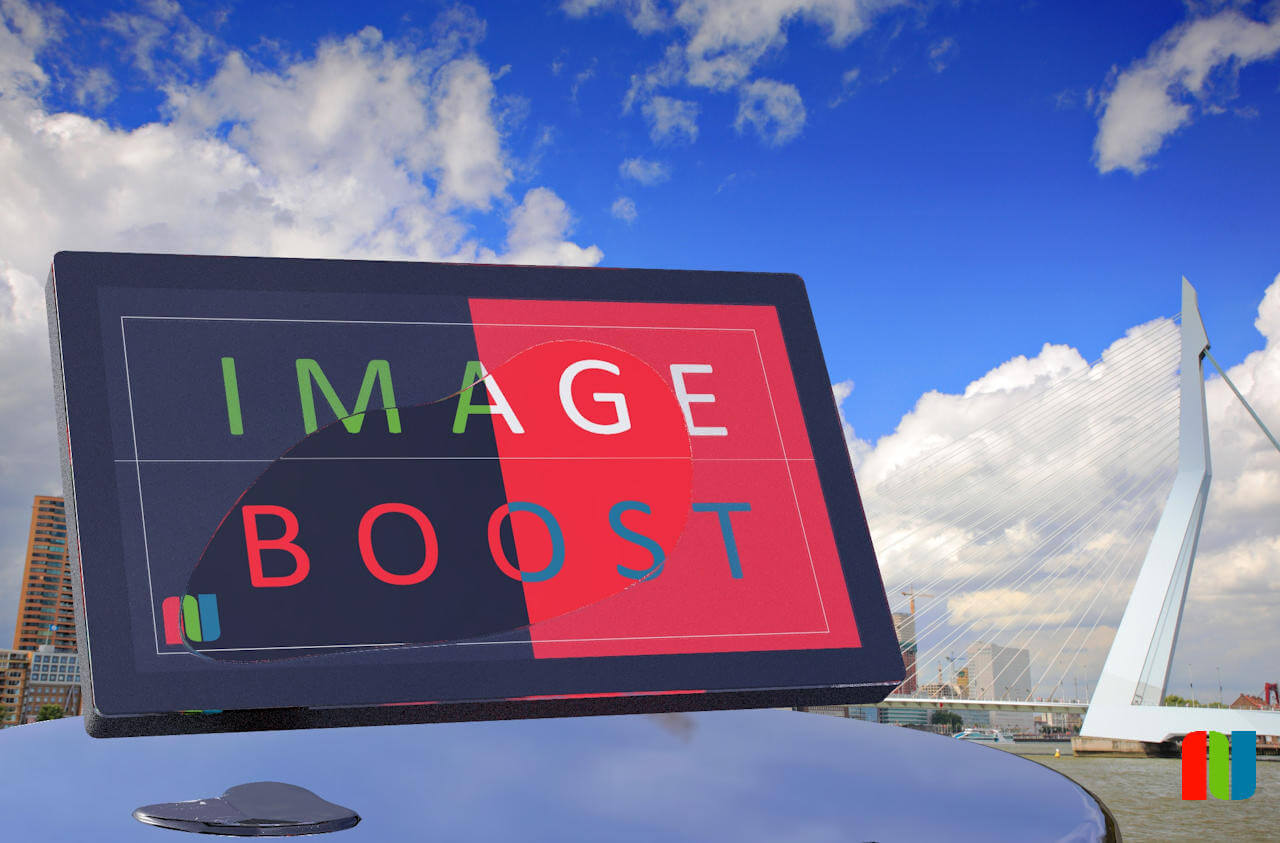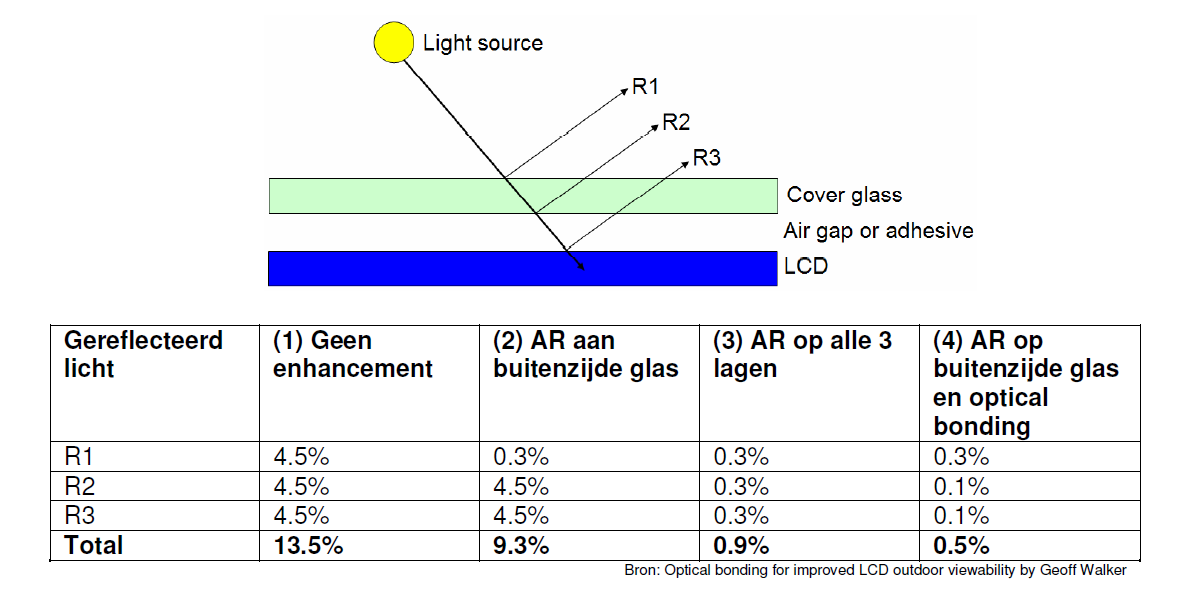
A Crystal
Clear Image
One of our In-House Technologies is optical bonding. During optical bonding a crystal clear gel coating is applied between the LCD surface and the glass. As a result, the lack of extra light refraction becomes the main feature, in addition to the advantages of absence of dust and moist, as also resistance to vandalism. Another major advantage is the faster heat drainage. In terms of the image, the contrast and brightness are being improved. A clear image is created when a combination is made with one of the other techniques.
A Clear and Bright Picture
In simple terms, in case of optical bonding the air layer between the protective glass (of touch screen) and the LCD-surface is removed. This way the glass-air-glass transition is cancelled and a homogeneous layer is created, with the following advantages:
- Reduction of the number of optical layers, resulting in strong improvement of light yield (brightness) and indirectly contrast in particular. (Contrast is the white pixel ratio against the black pixel). When the brightness is increased, often the contrast is adversely affected. Colours tend to ‘fade’.
- There will no longer be moisture visible behind the glass.
- Better mechanical properties.
- Partial elimination of parallax-effect. The image apparently approaches the glass surface.
As such, the use of a touch screen is more accurate and the viewing angle is better.
Optical bonding is usually applied in protection glass that is fitted with an Anti-Reflection (AR) layer or an Anti-Glare structure. Legibility of an LCD screen largely depends on the “contrast ratio” (or simply contrast). The higher the contrast, the better the legibility. It is a fact that reduction of the reflection improves the legibility. So, in case of abundant surrounding light (relatively more reflection) the effect of optical bonding will be best. This is somewhat quantified in the following image:

If the ambient brightness is 10,000 nits (an approximation or direct sunlight), reflected ambient or 13.5% in case #1 is 1350 nits. An approximation formula for calculating contrast ratio in this situation (courtesy or White Electronic Designs) is CR = 1 + (display brightness/reflected light). For a 200-nit Tablet PC display, 1350 nits or reflected light yields a contrast ratio or 1.15:1 – unreadable! For case #4, the formula yields a contrast ratio or 5:1 – not great, but definitely readable. “AR” in Table 1 is an abbreviation for an anti-reflective coating. AR is a multi-layer coating that matches the index or refraction of glass to that or air. As noted above, the better the match, the less light is reflected.
“Display enhancements” are difficult to calculate. Every configuration (LCD, backlight, glass or touch-screen) has different specifications and therefore it is advisable to first check the possible solution in practice.
Real Life Optical Bonding Demonstration
At Nottrot, a team of specialists is available every day to help you with this. With our many years of experience, we expertly look at which display solution is best suited for your application. As a result, you are assured of the optimal implementation of the project for you. We are happy to share our expertise.

